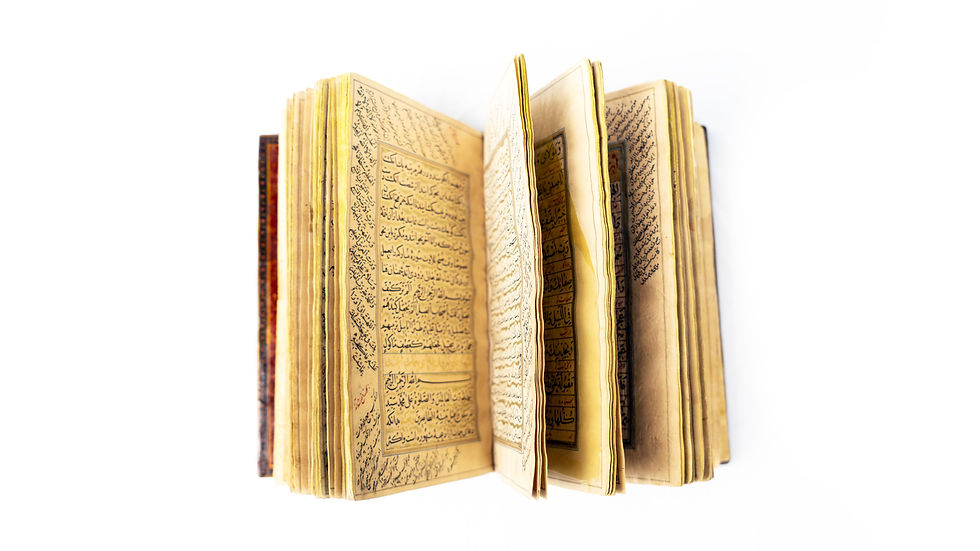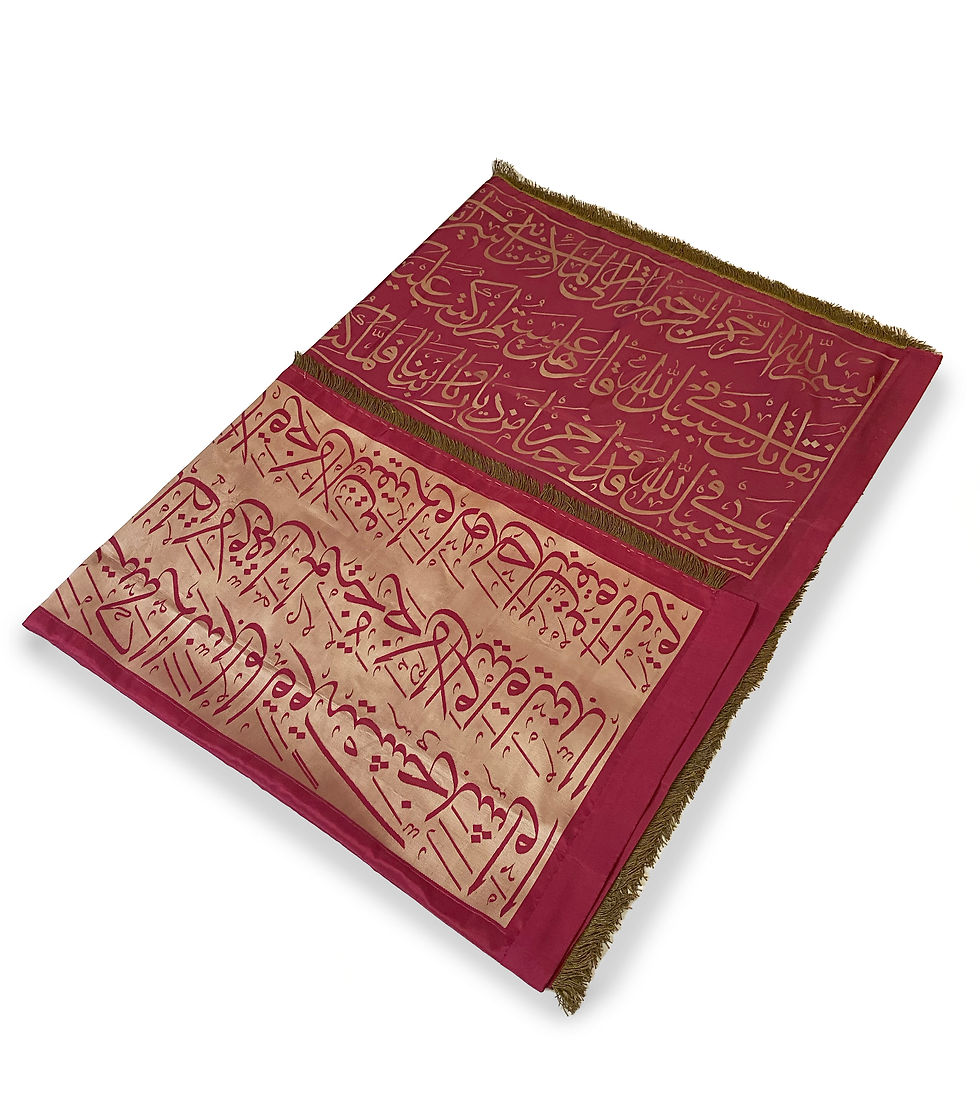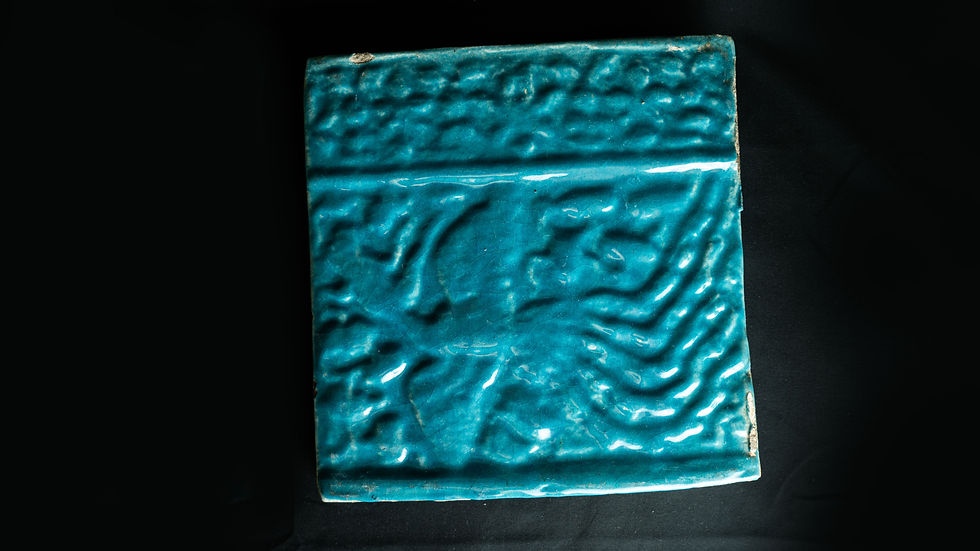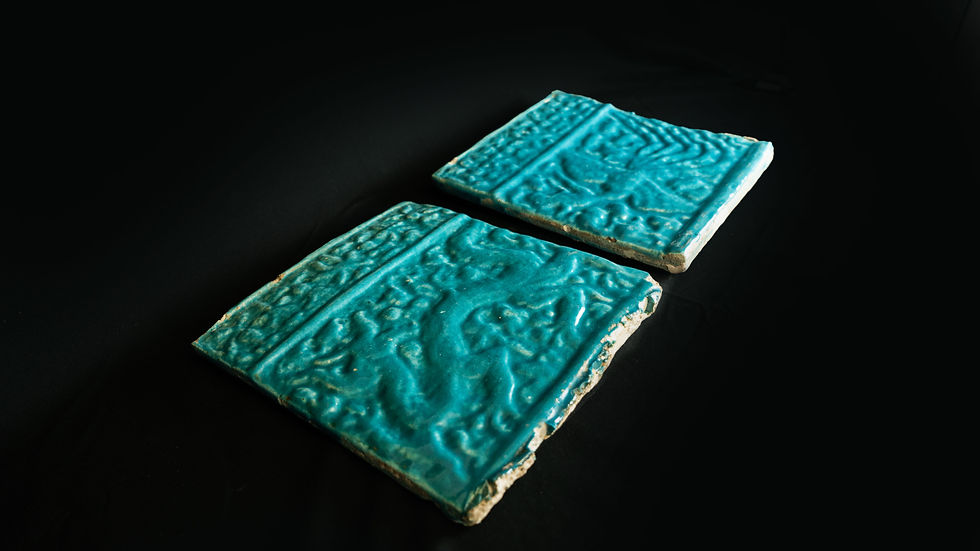M
A
H
Mayfair Auction House
PRIVATE SALE
Our auction house collaborates with specialists in Islamic art and antiques, with selected pieces available through private sale. Our confidential Private Sales channel provides a seamless and personalised experience both for sellers and buyers. For inquiries, please email us or visit Saint George Street Gallery.




A TALISMANIC SCROLL MAMLUK SYRIA OR WESTERN IRAN, CIRCA 14TH CENTURY
Arabic manuscript on dark cream paper, text written in naskh script black and red ink, setin roundels and some rectangular cartouches, lobbed gold roundels between verses, comprise of invocations, Qur’anic verses and Talismanic charts with Arabic numerals some missing parts at the beginning and end, gold and blue illuminated divisions in rectangular and roundel form, showcasing a brown leather flap at the beginning.
Dimensions
507.5 x 12cm




A KUFIC FOLIO NORTH AFRICA OR NEAR EAST 8TH/ 9TH CENTURY
Qur’an XVII. Sura al-Isra v. 46part to v.57 part Arabic manuscript on paper, 15 lines of black Kufic script, letter pointing with black dotes later added red, yellow and green rounds, one stylised gold ‘ha for every fifth verse, one gold roundel outlined with double ring within multicoloured dotes corresponds tenth verse marker.




THE MUNAJAT OF IMAM 'ALI SIGNED AHMAD AL-NAIRIZI, ISFAHAN, SAFAVID IRAN, DATED AH 1131/1715-16 AD
Arabic and Persian manuscript on paper, 150+1 folios, with 9ll. of black curved naskh on gold illuminated ground, with double interlinear divisions and Persian translation in red nasta'liq, following section of the manuscript with 12 lines of black naskh, text set within cloud-bands on gold ground, framed with polychrome and gold, titles in red or gold thuluth within illuminated cartouches occasional marginal notes, catchwords, opening folio with finely illuminated headpiece, preceded by double folio with almond-shaped illuminated medallions, colophon signed and dated, later seal impressions, ownership notes, in 18th century lacquer floral binding attributed to 'Ali Ashraf, the central lobed cartouches with polychrome flowers within a maroon field of scrolling gold flowers, with a brown Morocco spine.
Dimensions
21,3 x 12,3 cm, 15,5 x 8,4 cm




A CALLIGRAPHIC SILK PANEL, (GAZZA FLAG) OTTOMAN TURKEY, DATED 1296 AH / 1878 AD
Of square form, the red satin ground woven in yellow silk with 9 lines of elegant thuluth, of three rectangular fragments stitched together, red silk outer borders with fringes, 165.5 x 148cm Quran II Surah Al-Baraqah v. 246 Quran III Surah Al-Imran vv. 181 Quran Al-Nisa vv. 77, IV Surah Al=Ma’idah vv. 30 A section of a similar green panel from the last quarter of the 19th century can be seen in the Sakip Sabanci Museum collection.




A TALISMANIC POTTERY HEALING (SHIFA)CUP OTTOMAN
Qur’an XXXVI.Sura al-Yaseen Of conical form, with spiralling sura al-Yaseen written in beginning from the centre moving toward the rim black tiny naskh script, Very similar with Pre- Islamic Aramaic incantation
Bowls 9 cm height
10 cm mouth
6,5 cm base




A PAIR OF KASHAN TILES, IRAN
Of rectangular form, consisting of three registers, decorated in turquoise with a dragon and phoenix design on a lustre ground above a register of flowers and scrollwork




A GOLD METAL-THREAD EMBROIDERED RAW SILK TEXTILE, COVER, OTTOMAN TURKEY, 19TH CENTURY
Of rectangular form, the red silk ground embroidered in metal thread with dival technique, with a central ogival medallion with four other bouquets forming a diagonal cross, surrounded by a border in flowering branches
Dimensions
89x48cm


AN EWER WITH A BASIN, 19th CENTURY, OTTOMAN EGYPT, with OTTOMAN TUGHRA, KING FAROUK COLL
Exquisitely designed ewer and basin, featuring intricate gadrooning throughout. Of pear-shaped form, with high curving tubular spout, s-scroll handle, complemented by a gracefully scrolled lead handle and an acanthus attachment, the hinged lid crowned with an elegant pointed finial, the basin boasting a wide flaring boasting form with a rosette and stylised foliage motifs.In the realm of exquisite craftmanship, a larger walnut chest adorned with intricate bone inlay, attributed to the skilled carpenters of 16th century Barcelona, serves as a compelling point of comparison. This remarkable chest is prominently featured in the publication “Caliphs and Kings: The Art and Influence of Islamic Spain – Selections from the Hispanic Society of America, New York, 2004” (Catalogue number 86, page 108). Its sides exhibit a strikingly similar style and a comparable array of decorative elements to the present lot, strongly suggesting a shared origin and time of creation. The distinctive motif draws parallels with bone-inlaid furniture crafted in Granada and the Southern Provinces of Spain. It is worth noting that in the Andalusian region, marquetry works typically featured the iconic eight-pointed star known as “taracae granadia”. Interestingly, this motif traces its roots back to pre-Islamic mosaics and subsequently found its place in architectural designs within Nasrid buildings such as the Mezquita and Madina Azahara (as documented by Maria Paz Aguilo Alonso in “El Mueble en Espana: Siglos XVI - XVII, 1993, p. 164). Our chest, however, diverges from the original norm. While the frontal panel showcases the classic gridwork of eight-pointed stars, the remainder of the ornamentation is dominated by the presence of six and twelve-pointed starts and intricate starbursts. This intriguing departure hints at the possibility of a distinctive local reinterpretation of the renowned Grenadine design, further enhancing the uniqueness and allure of this exceptional piece of craftsmanship.
Dimensions
38 cm, 39,8 diameter




15TH CENTURY HADITH BOOK, SIGNED BY QASIM (STUDENT OF SHEIKH HAMDULLAH)
Mevlâ İzzeddîn Abdullatif b. Abdulazîz b. Emînü’d-Dîn er-Rûmî el- Aydınî el-Kirmânî İbni Ferişteh known as İbn al-Malak Mabariq al-Azhar fi Sharh Mashariq al-Anwar, signed by QASIM, Constantinople Dated Jumada l 901 AH- February 1496 AD A treatise on hadith, Arabic manuscript on dark cream polished paper, 263ff.plus three flyleaves, each folio with 25ll. of black naskh , text within black ruled gold frames, catchwords, annotations in smaller script in both text and the margins, opening folio with illuminated headpiece, colophon signed and dated, in Ottoman red Morocco binding with flap, decorated with gilt stamped borders, purple paper doublures Text 19 x 11.7 cm Folio 25x16.7 cm This manuscript commentary on Iyad bin Musa al Yahsubi’s Mashariq al-Anwar. Calligrapher Qasim was a student of Sheikh Hamdullah and served as a servant of Sultan Mehmed the Conqueror. He later entered the circle of Saint Sheikh Vafa and joined the court of Sultan Bayazid ll as a master of servants. He was admired for his fine naskh and well natured personality. The fine quality of the illumination and paper and the fact that it may have been produced for the Imperial Library of Sultan Bayazid ll, who was a well-known bibliophile. There are seven other known copies of this commentary, the earliest of which is dated AH936/1531AD, in British Library.our manuscript earliest known copy to date (C.Brocelmann)


